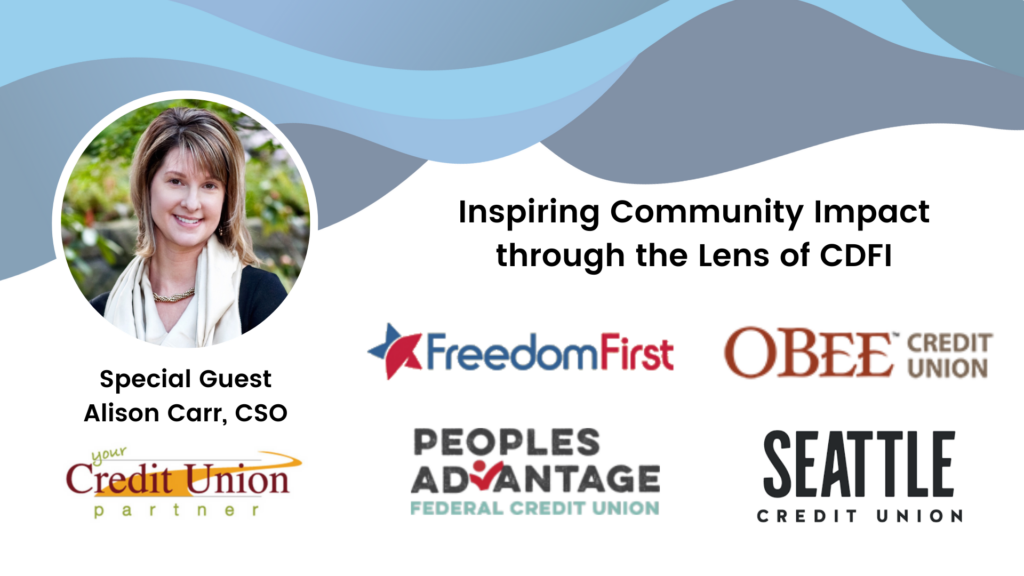As much regulatory change as Community Development Financial Institutions could face this year, the power of CDFIs set by the U.S. Treasury’s CDFI Fund continues to change the lives of credit union members and consumers in neighborhoods across the United States.
That dedication to the advancement of financial inclusion moved forward last month when the CDFI Fund awarded a record $1.73 billion in grant money for more than 600 CDFI-certified financial institutions. Of that total amount, $590.3 million will go to 203 credit union cooperatives throughout the nation.
Announced by Vice President Kamala Harris and Deputy Secretary of the Treasury Wally Adeyemo, the funding is centrally committed to aiding communities that are suffering residual and disproportionate economic impacts stemming from the COVID pandemic.
“These funds will strengthen the ability of CDFIs to assist moderate- to low-income communities recover from the COVID-19 pandemic and invest in long-term prosperity,” the statement read.
“These grant funds will be transformative for grantees that are building a more equitable, resilient economy, along with helping sustain our strong economic recovery,” Secretary of the Treasury Janet Yellen said. “These critical resources will allow mission-driven lenders to expand access to capital in financially underserved communities, which will help increase contributions to long-term economic growth.”
The accomplishments of CDFI programs and the individuals and businesses they serve depends largely on individualized services. These various services encompass technical assistance, credit counseling, and financial education initiatives. To afford appropriate staff and the required operating expenses for those services, the power of CDFIs consistently work to acquire operational funding. And to secure that funding, CDFI-certified credit unions have to consistently document efforts to show their effectiveness.
Those fine points of effectiveness and efforts to fulfill that designation were highlighted to impressive effect this last Tuesday, May 23, when QCash’s joint webinar with CUNA Strategic Services brought together four accomplished and dynamic credit union luminaries to discuss best practices, valuable lessons learned, successfully employed strategies, approaches to CDFI certification, how CDFI status informs larger goals, and how the QCash digital small-dollar lending platform plays an influential role in accomplishing those goals.
The power of CDFIs continues to inspire

In a joint QCash and CUNA Strategic Services webinar packed full of practical and applicable advice in the world of credit unions and the power of CDFIs, moderator Alison Carr, Chief Strategy Officer for Your Credit Union Partner, started the off the hour off by welcoming four experienced and knowledgeable leaders in the U.S. credit union community: Dave Prosser, Senior Vice President at Freedom First Credit Union, Dayton Hughes, Consumer Lending Operations Manager at Seattle Credit Union, Justin Cousins, COO at Peoples Advantage Federal Credit Union, and James Collins, CEO at O Bee Credit Union.
Dave Prosser’s opening answer summed up an interesting first question from moderator Alison Carr to each guest when asked what inspired their respective credit unions to pursue CDFI certification. Answer: each cooperative was already on their way to achieving similar objectives required of certification.
“We’ve been a CDFI now for about 13 years, and our motivator for pursuing that designation was that we were already doing that work in that space,” Prosser said. “We were finally able to put a definition around it, and were able to actually label different loan programs and services.”
Dave also touched on perceived apprehensions about applying for CDFI certification from credit unions.
“I think a lot of challenges from credit unions looking at becoming a CDFI know you [have to] demonstrate [a] body of work to get that designation. A lot of us are doing it, but oftentimes we don’t put a label on it or think of it in those terms. So I would encourage everybody to look, with the work they’re already doing, and [consider their existing results] already a credential that checks the box to become a CDFI.”
After agreeing with Dave’s assertion that many credit unions may unknowingly qualify for CDFI status, Dayton Hughes brought the question back to the credit union movement’s origins to explain the motivation to achieve the power of CDFIs through certification.
“We all trace our credit union history back to the mid-’30s when so-and-so had a card table set up in their garage or in a corner of their business, and that’s how the credit union started. And it’s always been our goal to people who fit outside a traditional banking or financial box. CDFI has allowed us to focus on who, originally, credit unions were really formed for – common, everyday folks who need to save or who need to make a purchase in their life for themselves or for their families.”
Business-wise, the CDFI designation also opens opportunities for the credit union to establish valued and long-lasting partnerships that may not have formed before. Justin Cousins with Peoples Advantage articulated the value of collaboration and the advantages of community partnerships to enhance both one’s cooperative and, by extension, its benefits to members.
“[Peoples Advantage] is headquartered in Petersburg, Virginia, so, for us, Petersburg local government – from the mayor to city manager to city council members – they’ve all been very supportive of what we’re trying to do, and they’ve partnered with us on a lot of initiatives. We opened up a Financial Empowerment Center in downtown Petersburg in March of last year, and now we’re opening up one in Richmond, Virginia, as well.
“The Chamber of Commerce is also very supportive of the work that we do. We partner with them on a lot of events to help small businesses. The list just goes on. We’re relatively young in that journey of being a CDFI, but as it stands right now we have a lot of work to do within our local community, so that’s where a lot of those opportunities have come from for us.”
As advocated above by just a few of the experienced people making it happen on the ground, through different and varying strategies particular to each community, every CDFI can establish itself as a solution to financial inclusion by taking a leading role in the cultivation and growth of those members willing to put their faith and trust in their local cooperative.






